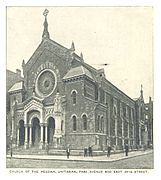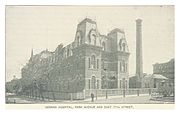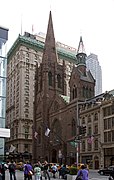
Samuel Sloan was a Philadelphia-based architect and best-selling author of architecture books in the mid-19th century. He specialized in Italianate villas and country houses, churches, and institutional buildings. His most famous building—the octagonal mansion "Longwood" in Natchez, Mississippi—is unfinished; construction was abandoned during the American Civil War.

G. W. & W. D. Hewitt was a prominent architectural firm in the eastern United States at the turn of the twentieth century. It was founded in Philadelphia in 1878, by brothers George Wattson Hewitt (1841–1916) and William Dempster Hewitt (1847–1924), both members of the American Institute of Architects. The firm specialized in churches, hotels and palatial residences, especially crenelated mansions, such as Maybrook (1881), Druim Moir (1885–86) and Boldt Castle (1900–04).

Charles Coolidge Haight was an American architect who practiced in New York City. He designed most of the buildings at Columbia College's now-demolished old campus on Madison Avenue, and designed numerous buildings at Yale University, many of which have survived. He designed the master plan and many of the buildings on the campus of the General Theological Seminary in Chelsea, New York, most of which have survived. Haight's architectural drawings and photographs are held in the Dept. of Drawings and Archives at the Avery Architectural and Fine Arts Library at Columbia University in New York City.

Stone, Carpenter & Willson was a Providence, Rhode Island based architectural firm in the late 19th and early 20th Centuries. It was named for the partners Alfred Stone (1834–1908), Charles E. Carpenter (1845–1923). and Edmund R. Willson (1856–1906). The firm was one of the state's most prominent.

Frederick Clarke Withers was an English architect in America, especially renowned for his Gothic Revival ecclesiastical designs. For portions of his professional career, he partnered with fellow immigrant Calvert Vaux; both worked in the office of Andrew Jackson Downing in Newburgh, New York, where they began their careers following Downing's accidental death. Withers greatly participated in the introduction of the High Victorian Gothic style to the United States.

George E. Harney was a late 19th-century American architect based in New York City.

Wilson Brothers & Company was a prominent Victorian-era architecture and engineering firm established in Philadelphia, Pennsylvania. The company was regarded for its structural expertise.
Marc Eidlitz was a builder active in New York City, where he was prominent in the construction industry, in partnership with his son Otto Eidlitz (1860–1928).

J. William Schickel, FAIA, (1850–1907) known professionally as William Schickel, was a German-American architect and founder of the New York architectural firm of Schickel & Ditmars.

Robert W. Gibson, AIA, was an English-born American ecclesiastical architect active in late-nineteenth- and early-twentieth-century New York state. He designed several large Manhattan churches and a number of prominent residences and institutional buildings.
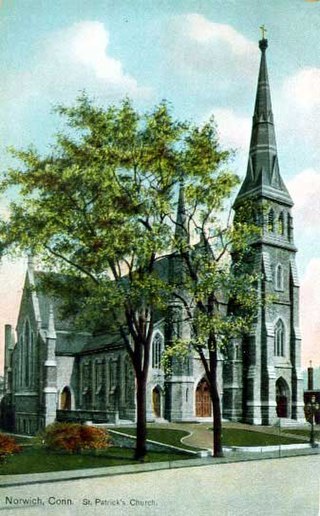
James Murphy, FAIA, (1834–1907) was an Irish-American architect active in late-nineteenth- and early twentieth-century New England, who designed numerous Roman Catholic churches and related structures.

Clifton A. Hall (1826-1913) was an American architect from Providence, Rhode Island.

Warren R. Briggs (1850–1933) was an American architect who worked in Bridgeport, Connecticut.

Raymond F. Almirall (1869–1939) was an American architect of the Beaux-Arts period, practicing in New York City.
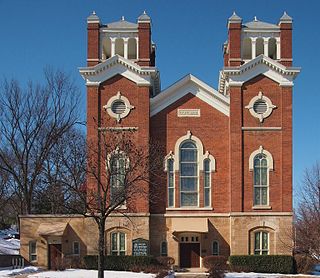
Charles N. Daniels (1828-1892) was an American architect active in Minnesota, North Dakota, and Washington.

Lambert Packard (1832-1906) was an American architect from St. Johnsbury, Vermont.

John Welch (1825-1894) was a Scottish-born American architect of Brooklyn, New York, who designed numerous churches. He was one of the founders of American Institute of Architects.

Albert W. Fuller (1854-1934) was an American architect practicing in Albany, New York.

John P. Gaynor was an Irish American architect practicing in New York City and San Francisco during the nineteenth century.

Enoch A. Curtis (1836–1907) was an American architect practicing in Fredonia, New York during the nineteenth century.

